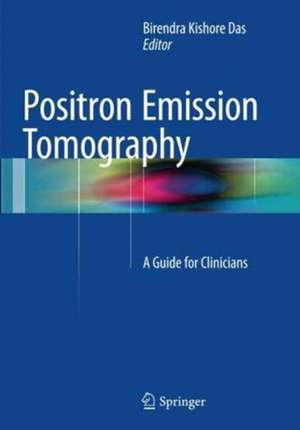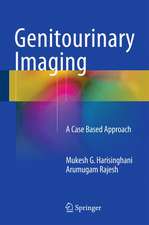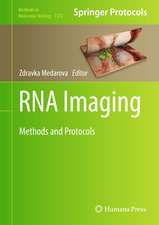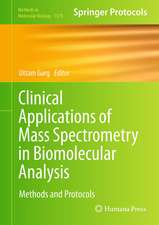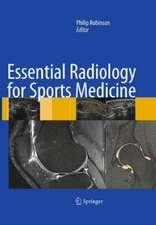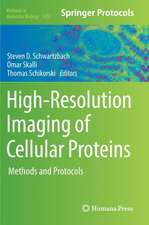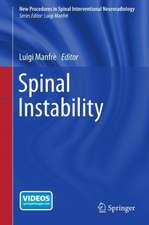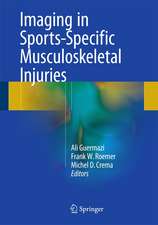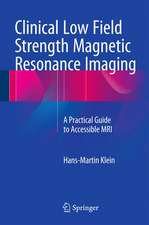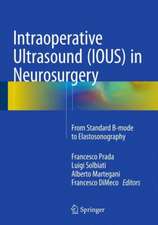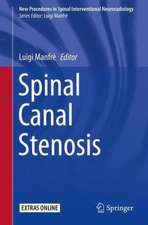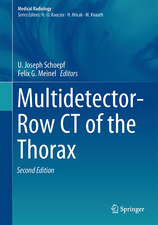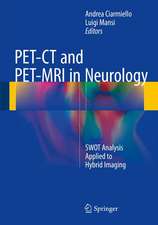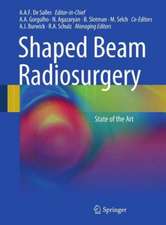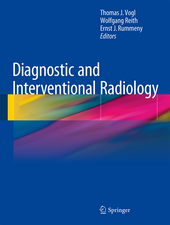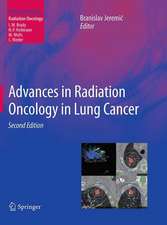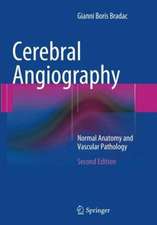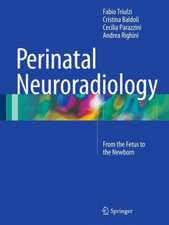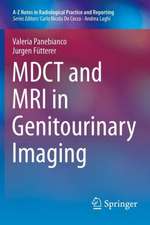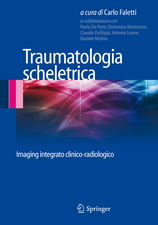Positron Emission Tomography: A Guide for Clinicians
Editat de Birendra Kishore Dasen Limba Engleză Paperback – 23 aug 2016
Molecular imaging is going to revolutionize the way we practice medicine in the future. It will lead to more accurate diagnosis of diseases and its extent which will lead to better management and better outcomes. In the history of medicine no imaging modality has ever become so popular for use in such a short time as has the PET technology. PET imaging is mostly used in oncology, neurology and cardiology but also finds application in other situations such as infection imaging. The main focus, of course, is in management of cancer patients. PET (PET-CT) is not only very sensitive as it can detect changes in abnormal biochemical processes at cellular level but in one go all such areas can be detected in a whole body scan. It can show response to therapy, eradication of the disease or recurrence during the follow-up period. One of the main differences between a PET scan and other imaging tests like CT scan or MRI is that the PET scan reveals the cellular level metabolic changes occurring in an organ or tissue. This is important and unique because disease processes begin with functional changes at the cellular level. A PET scan can detect these very early changes whereas a CT or MRI detect changes much later as the disease begins to cause changes in the structure of organs or tissues. Some cancers, especially lymphoma or cancers of the head and neck, brain, lung, colon, or prostate, in very early stage may show up more clearly on a PET scan than on a CT scan or an MRI. A PET scan can measure such vital functions as blood flow, oxygen use, and glucose metabolism, which can help to evaluate the effectiveness of a patient’s treatment plan, allowing the course of care to be adjusted if necessary.
Apart from its vital role in oncology it can estimate brain's blood flow and metabolic activity. A PET scan can help finding nervous system problems, such as Alzheimer's disease, Parkinson's disease, multiple sclerosis, transient ischemic attack (TIA), amyotrophic lateral sclerosis (ALS), Huntington's disease, stroke, and schizophrenia. It can find changes in the brain that may cause epilepsy. PET scan is also increasingly being used to find poor blood flow to the heart, which may mean coronary artery disease. It can most accurately estimate the extent of damage to the heart tissue especially after a heart attack and help choose the best treatment, such as coronary artery bypass graft surgery,stenting or medical treatment. It can also contribute significantly in identifying areas exactly where radiotherapy is to be targeted avoiding unnecessary radiation exposure to surrounding tissue.
| Toate formatele și edițiile | Preț | Express |
|---|---|---|
| Paperback (1) | 582.86 lei 38-44 zile | |
| Springer India – 23 aug 2016 | 582.86 lei 38-44 zile | |
| Hardback (1) | 724.29 lei 22-36 zile | |
| Springer India – 22 dec 2014 | 724.29 lei 22-36 zile |
Preț: 582.86 lei
Preț vechi: 613.54 lei
-5% Nou
Puncte Express: 874
Preț estimativ în valută:
111.57€ • 121.23$ • 93.78£
111.57€ • 121.23$ • 93.78£
Carte tipărită la comandă
Livrare economică 16-22 aprilie
Preluare comenzi: 021 569.72.76
Specificații
ISBN-13: 9788132229988
ISBN-10: 8132229983
Pagini: 192
Ilustrații: XII, 192 p. 115 illus., 93 illus. in color.
Dimensiuni: 178 x 254 mm
Ediția:Softcover reprint of the original 1st ed. 2015
Editura: Springer India
Colecția Springer
Locul publicării:New Delhi, India
ISBN-10: 8132229983
Pagini: 192
Ilustrații: XII, 192 p. 115 illus., 93 illus. in color.
Dimensiuni: 178 x 254 mm
Ediția:Softcover reprint of the original 1st ed. 2015
Editura: Springer India
Colecția Springer
Locul publicării:New Delhi, India
Cuprins
Positron Emission Tomography ( PET ) – an overview.- Development of Positron Emission Tomography (PET) - A historical prospective.- Planning of a PET Facility in India.- PET in comparison with other imaging modalities.- Technical considerations during PET imaging .- Application of PET in Oncology ( Overview).- Application of PET in Neurology (Overview).- Application of PET in Cancer of the Brain .- Application of PET in Cancer of the Naso-Pharynx .- Application of PET in Cardiology.- Application of PET in Breast Cancer.- Application of PET-CT in lung cancer- The Current Status and Future Potentials.- Application of PET in Cancer of Gastro-Intestinal System .- Application of PET in Cancer of the Genito-Urinary System .- Application of PET in Cancer of the Endocrine Organs.- Application of PET in Cancer of the Bone and Bone Marrow.- Application of PET in Infection and inflammation .- Application of PET in therapy planning.- Basic principles and functional aspects of a medical Cyclotron.- Basic principles of CT Imaging.- Fundamentals of MRI Imaging.- Comparison of PET-CT with PET-MRI.
Recenzii
“This is a text and atlas on PET imaging for: Brain,head & neck, pulmonary, heart, liver, spleen, GU, GI, lymph system, andmusculo-skeletal systems. … This book is for radiologists and nuclear medicineprofessionals at the training and expert levels. Residents and fellows workingin the clinics and reading rooms will benefit from the multi-colorillustrations.” (Joseph J. Grenier, Amazon.com, November, 2015)
Notă biografică
Prof.Dr. Birendra Kishore Das Director, Utkal Institute of Medical Sciences Jaydev Vihar, Bhubaneswar, India.
Textul de pe ultima copertă
This book provides basic information about the relatively new and evolving technology –positron emission tomography- for its clinical applications and practical guidance for the referring physicians. Chapters cover application of PET in various clinical settings including oncology, cardiology, and neurology with a focus on its role in various cancers. Because most of the new PET equipments come as hybrid machines with CT or MRI, two chapters have been included at the end of the book to provide basic and comprehensive information about these two technologies. Molecular imaging is going to revolutionize the way we practice medicine in the future. It will lead to more accurate diagnosis of diseases and its extent which will lead to better management and better outcomes. PET imaging is mostly used in oncology, neurology and cardiology but also finds application in other situations such as infection imaging. The main focus, of course, is in management of cancer patients. PET (PET-CT) is notonly very sensitive as it can detect changes in abnormal biochemical processes at cellular level but in one go all such areas can be detected in a whole body scan. It can show response to therapy, eradication of the disease or recurrence during the follow-up period. Some cancers, especially lymphoma or cancers of the head and neck, brain, lung, colon, or prostate, in very early stage may show up more clearly on a PET scan than on a CT scan or an MRI. A PET scan can also measure such vital functions as blood flow, oxygen use, and glucose metabolism, which can help to evaluate the effectiveness of a patient’s treatment plan, allowing the course of care to be adjusted if necessary. Apart from its vital role in oncology it can estimate brain's blood flow and metabolic activity. A PET scan can help finding various nervous system disorders, such as Alzheimer's disease, Parkinson's disease, multiple sclerosis, TIA etc. PET scan is also increasingly being used to find poor blood flow to the heart, which may mean coronary artery disease. It can most accurately estimate the extent of damage to the heart tissue especially after a heart attack and help choose the best treatment, such as coronary artery bypass graft surgery, stenting or medical treatment. PET scan can also contribute significantly in identifying areas exactly where radiotherapy is to be targeted avoiding unnecessary radiation exposure to surrounding tissue.
Caracteristici
Covers the technical aspects of PET and PET-CT for better understanding of the images and the information Highlights the difference between images obtained from CT and MRI in the perspective of clinical importance Describes and justifies indication for PET imaging in different cancer types Written by top experts working at state-of-the-art high-volume institutions
